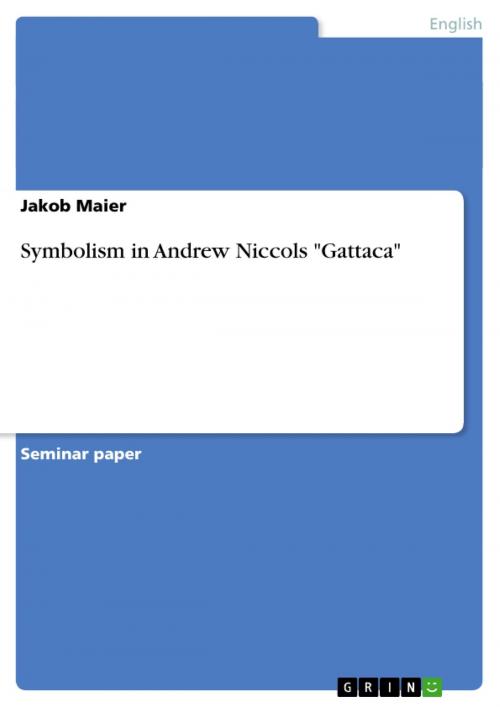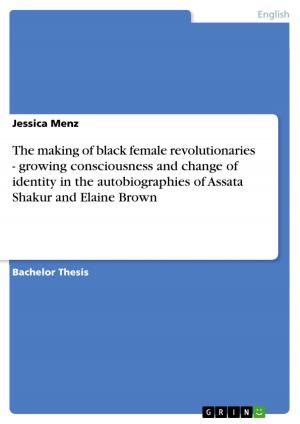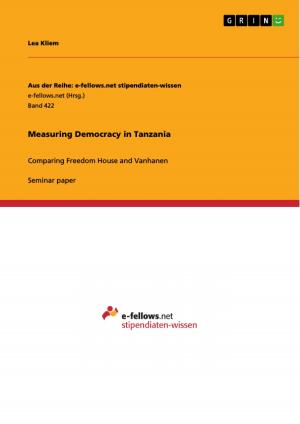| Author: | Jakob Maier | ISBN: | 9783638622257 |
| Publisher: | GRIN Publishing | Publication: | March 3, 2007 |
| Imprint: | GRIN Publishing | Language: | English |
| Author: | Jakob Maier |
| ISBN: | 9783638622257 |
| Publisher: | GRIN Publishing |
| Publication: | March 3, 2007 |
| Imprint: | GRIN Publishing |
| Language: | English |
Seminar paper from the year 2006 in the subject American Studies - Culture and Applied Geography, grade: 1,3, http://www.uni-jena.de/, course: Science Fiction, 2 entries in the bibliography, language: English, abstract: Gattaca is a film by director Andrew Niccol. It is set in the not too distant future and is about a man, Vincent Freeman, living in a society where the fate of its citizens is already influenced before their birth. By prenatal preselection the so called 'Valids', people who are genetically superior to those who have been conceived the common way, are destined to have privileged jobs and build the elite of society. Vincent, a 'faith birth', whose genes are flawed, has the dream to become an astronaut. To achieve this apparently hopeless goal he takes the identity of Jerome Morrow, a 'Valid' with perfect genes, who is disabled and tied to a wheelchair after a suicide attempt. Equipped with great ambition, Vincent manages to overcome the obstacles on his way to become an astronaut at Gattaca, a corporation that organizes space missions. Although Gattaca has an exciting plot, Andrew Niccol puts the focus on questions of moral and humanity. Prominent issues in Gattaca, that are repeatedly treated with representation by subtle symbolism, are life and especially birth, loss of individuality, competition, and discrimination. Niccol uses imagery and symbolism to develop a language that works particularly on the connotative level. An attempt to read the film only by its denotations will without doubt be unsuccessful. Especially the ending sequence is full of images that are crucial for the comprehension of Niccol's point. Some of them can be read for themselves, others need comparison with other scenes from the film. By a step-by-step analysis of the last 24 shots of the film I will show how the use of symbols and images works in Gattaca.
Seminar paper from the year 2006 in the subject American Studies - Culture and Applied Geography, grade: 1,3, http://www.uni-jena.de/, course: Science Fiction, 2 entries in the bibliography, language: English, abstract: Gattaca is a film by director Andrew Niccol. It is set in the not too distant future and is about a man, Vincent Freeman, living in a society where the fate of its citizens is already influenced before their birth. By prenatal preselection the so called 'Valids', people who are genetically superior to those who have been conceived the common way, are destined to have privileged jobs and build the elite of society. Vincent, a 'faith birth', whose genes are flawed, has the dream to become an astronaut. To achieve this apparently hopeless goal he takes the identity of Jerome Morrow, a 'Valid' with perfect genes, who is disabled and tied to a wheelchair after a suicide attempt. Equipped with great ambition, Vincent manages to overcome the obstacles on his way to become an astronaut at Gattaca, a corporation that organizes space missions. Although Gattaca has an exciting plot, Andrew Niccol puts the focus on questions of moral and humanity. Prominent issues in Gattaca, that are repeatedly treated with representation by subtle symbolism, are life and especially birth, loss of individuality, competition, and discrimination. Niccol uses imagery and symbolism to develop a language that works particularly on the connotative level. An attempt to read the film only by its denotations will without doubt be unsuccessful. Especially the ending sequence is full of images that are crucial for the comprehension of Niccol's point. Some of them can be read for themselves, others need comparison with other scenes from the film. By a step-by-step analysis of the last 24 shots of the film I will show how the use of symbols and images works in Gattaca.















